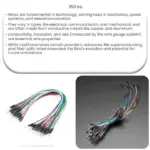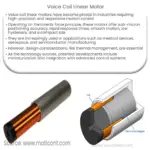What is T-carrier System?
The T-carrier system is a series of digital transmission systems developed by the Bell System in the United States in the 1950s. It is a point-to-point communication system that carries voice and data over copper wires. The T-carrier system uses pulse code modulation to convert analog signals into digital signals for transmission over long distances. The system is designed to provide high-quality, reliable voice and data communications.
The T-carrier system is a hierarchical system with multiple levels of transmission rates. The most common T-carrier levels are T1, T3, and T4. T1 is the most widely used and provides a transmission rate of 1.544 megabits per second (Mbps), which is equivalent to 24 channels of voice or data. T3 provides a transmission rate of 44.736 Mbps, which is equivalent to 672 channels of voice or data, and T4 provides a transmission rate of 274.176 Mbps, which is equivalent to 4,416 channels of voice or data.
Evolution of T-carrier Technology
The T-carrier system has evolved over the years to meet the growing demand for high-speed data transmission. In the 1980s, the Integrated Services Digital Network (ISDN) was introduced, which allowed for the transmission of data, voice, and video over a single line. In the 1990s, the Asynchronous Transfer Mode (ATM) was developed, which provided a more efficient way to transmit data over the T-carrier system. In the 2000s, the T-carrier system was replaced by the Sonet system, which uses optical fibers instead of copper wires.
Today, the T-carrier system is still widely used in many parts of the world, particularly in areas where fiber optic infrastructure is not available. The system has been adapted to support a wide range of applications, including voice over IP (VoIP), video conferencing, and internet access.
Advantages and Limitations of T-carrier
The T-carrier system has several advantages over other communication systems. It provides reliable, high-quality voice and data transmission over long distances. It is also relatively inexpensive compared to other communication systems, such as satellite and fiber optic systems. Additionally, the T-carrier system is easy to install and maintain.
However, the T-carrier system has some limitations. It is limited by the capacity of the copper wires used in the system, which can limit the transmission rate and distance of the system. The system is also vulnerable to interference from other electrical devices, which can cause signal degradation and loss of data.
Example Application: T1 Lines in Business Connectivity
T1 lines are a common application of the T-carrier system in business connectivity. They provide reliable, high-speed internet access for businesses with moderate data needs. T1 lines provide a transmission rate of 1.544 Mbps, which is equivalent to 24 channels of voice or data. This makes them ideal for small to medium-sized businesses that require reliable internet connectivity for email, web browsing, and basic data transfer.
T1 lines are also commonly used for VoIP and video conferencing applications. They provide the necessary bandwidth and reliability for high-quality voice and video communication. T1 lines are available from a wide range of service providers and can be easily installed and maintained. However, they are more expensive than other types of internet connections, such as DSL and cable, due to the dedicated nature of the service.




